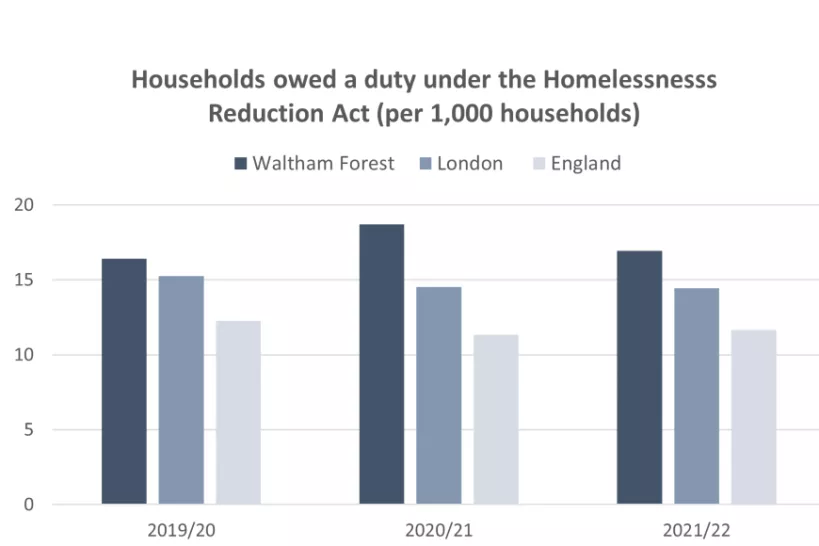Last updated: 20 November 2024
Next review: 20 November 2025
This content is part of the Waltham Forest JSNA. To see other JSNA content, visit the JSNA landing page
Homelessness is associated with severe poverty and is a social determinant of health. It often results from a combination of events such as relationship breakdown, debt, adverse experiences in childhood, and ill health. Homelessness is associated with poor health, education, and social outcomes, particularly for children [1].
The Homelessness Reduction Act (HRA) that came into force in April 2018 introduced new prevention and relief duties owed to all eligible households who are homeless or threatened with becoming homeless. Prevention duties include activities aimed at preventing a household threatened with homelessness within 56 days of becoming homeless. Relief duties are owed to households that are already homeless and require help to secure settled accommodation.
During the financial year 2021 to 2022, 1,757 households in Waltham Forest were owed a duty under the Homelessness Reduction Act, equating to 16.9 households per 1,000. This is above the national (11.7 per 1,000) and regional (14.7 per 1,100) averages.

Source: OHID Public Health Outcomes Framework. Data from Office for Health Improvement and Disparities. Date accessed: 26 March 2023.
References:
[1] Local Government Association (2017). The impact of homelessness on health: a guide for local authorities. Date accessed: 05 May 2023